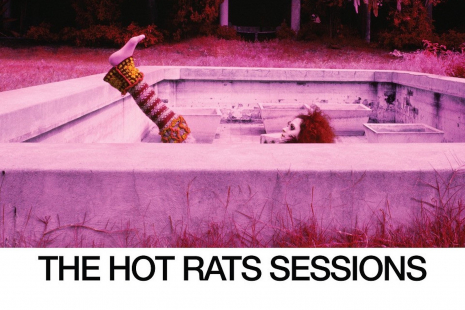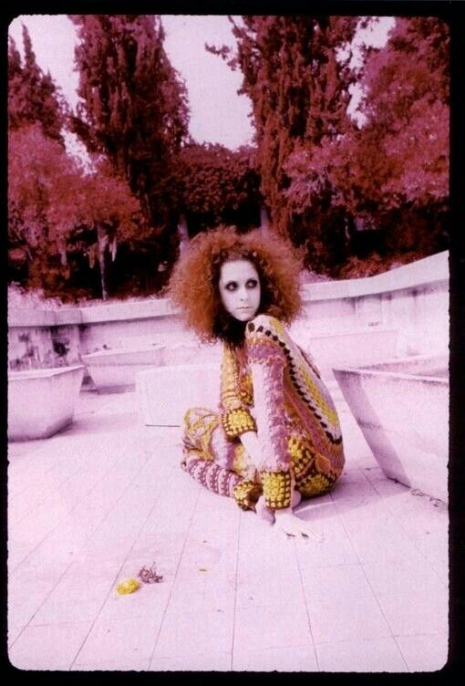
After he disbanded the original incarnation of the Mothers of Invention in 1969, Frank Zappa immediately started working on his second solo album, Hot Rats. He was backed in the studio by former Mother Ian Underwood as his main creative partner, along with electric violin pioneer Don “Sugarcane” Harris, his old chum from high school Captain Beefheart, Jean-Luc Ponty, several session musicians known as top LA jazz players, as well as a teenaged Shuggie Otis and an uncredited Lowell George.
The album was recorded at TTG Studios in Hollywood near the intersection of Sunset and Highland, a short drive from Zappa’s Laurel Canyon home. Zappa had recorded at TTG before, Freak Out! was done there, and the studio had a reputation for high quality sound. One of the studio’s owners, Tom Hidley, had worked on developing the first car stereo (for “Madman” Muntz) and had built the then state-of-the-art MGM/Verve studio in New York from the ground up. In 1968, Hidley devised a 16 track analog tape recorder—4 tracks or 8 tracks was the norm at the time—and deployed it at TTG.
Hidley’s “homemade” technical innovations offered Zappa fully twice the amount of recording tracks as had been available to him the last time he’d been in the studio and he took full advantage of TTG ‘s custom-built gear and advanced recording equipment to create an album unlike any that had been heard before. To illustrate just how big of a leap this was, for the first time Zappa was able to create a stereo drum sound. Instead of just one single (mono) track for drums, now he could record on four, one for the snare, one for the bass drum and two on either side for the rest of the kit and cymbals.This had never really been done before, and the extra tracks offered the engineer heretofore unfeasible levels of control in the mix down. Zappa’s methods were widely copied and became the standard studio protocol as 16 track recorders became more the norm. Zappa used other tracks for multiple overdubs by Ian Underwood of horns and keyboards. With just a few players, he could achieve the sound and rich musical textures of a large ensemble. Ian Underwood alone plays the parts of approximately eight to ten musicians. Simultaneously. Even the year before, that would have been utterly impossible.

An outtake of GTO Miss Christine from the ‘Hot Rats’ photo session by Andee Nathanson
Zappa also used a lot of tape manipulation and sonic processing, recording certain instruments double fast and then slowing them down to shift the sound into something more exotic. This is how the weirder aspects of the album’s unique sound came to be. Subtle and not so subtle electronic touches were integrated with woodwind instruments and grand piano. Zappa played a socket wrench on “Willie the Pimp” in case you have ever wondered what THAT sound was. He even close-miked a plastic comb for “It Must Be a Camel.”
What emerged from these session is a jazz-rock masterpiece. Zappa’s wild guitar improvisions roar across Hot Rats, adding a fiendishly greasy element to the overall sound. Hot Rats is jazz AND it is rock, unlike most music termed “fusion.” Jazz musicians could rock, sure, but could rock musicians jazz? Most could not, but Frank Zappa ultimately composed Frank Zappa music, and existed in his own self-created musical universe. His flavor of jazz-rock was uniquely his own. Listening to Hot Rats today, it’s interesting to wonder how it must’ve sounded to even the most adventurous music fans of 1969!
And now, 50 years later… there is even more Hot Rats. On December 20th, just a day shy of what would have been Frank Zappa’s 79th birthday, Zappa Records and UMe will release a mammoth six-disc boxed set of The Hot Rats Sessions. This collection collects every composition recorded during the July and August 1969 dates at TTG, and includes much material that would be utilized by Zappa elsewhere later. It’s a forensic look into how this classic was made and the fullest picture we have yet of Zappa working in the studio.
The Hot Rats Sessions will be available in a six CD boxed set and digitally, including as an Apple Digital Master. The completed basic tracks were mixed from the original multitrack analog master tapes by Craig Parker Adams and then mastered by Bob Ludwig earlier this year. The original album, pressed on hot pink vinyl by Pallas, is also available.
“Dame Margret’s Son To Be A Bride” (1969 Quick Mix)